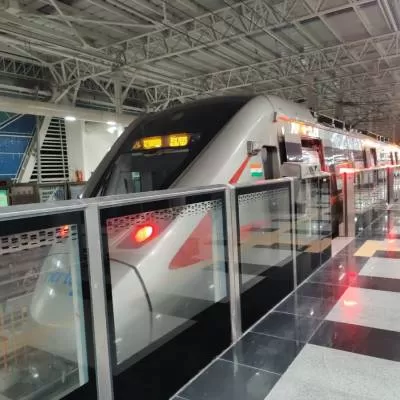
Mumbai, June 16 -- Commuters between Delhi and Meerut are set to benefit from a major leap in urban transport, as the 82-kilometre Delhi-Ghaziabad-Meerut Rapid Rail Transit System (RRTS) is likely to become fully operational by late June or early July, according to officials from the National Capital Region Transport Corporation (NCRTC).
The RRTS corridor, which has already seen 55 kilometres of its length-stretching from New Ashok Nagar to Meerut South-open to the public, will soon be complete with final trial runs nearing conclusion. Pending a crucial inspection by the Commissioner of Metro Rail Safety (CMRS), full-scale commercial operations of India's first semi-high-speed mass transit system are imminent.
Rapid trains are already running on the full stretch technically, though two sections-4.5 km from Sarai Kale Khan to New Ashok Nagar in Delhi, and 23 km from Meerut South to Modipuram-are undergoing final safety clearances. The corridor also integrates the 27-kilometre Meerut Metro, which will share infrastructure with the RRTS-a first for India.
Launched in March 2019 by Prime Minister Narendra Modi, the project has been implemented in phases. Operations began in October 2023 with a 17 km priority stretch from Sahibabad to Duhai, followed by Duhai to Modinagar North, Modinagar North to Meerut South, and finally Sahibabad to New Ashok Nagar, culminating in the current 55 km operational network. To date, the system has already clocked over 10 million (1 crore) passengers.
The remaining stations beyond Meerut South-Shatabdi Nagar, Begumpul, and Modipuram-will complete the corridor. Of note is the Begumpul underground station, an engineering landmark within Meerut's market area, measuring 246 metres long, 24.5 metres wide, and at a depth of 22 metres. It is designed to serve both rapid rail and metro trains.
The 23 km Meerut Metro corridor, of which 18 km is elevated and 5 km underground, includes 13 stations-three underground-and will operate up to Modipuram Depot.
Once inaugurated, the RRTS will drastically reduce commute times, matching intra-city metro convenience and significantly boosting regional connectivity, economic development, and urban mobility across the National Capital Region.
Published by HT Digital Content Services with permission from Construction World.
